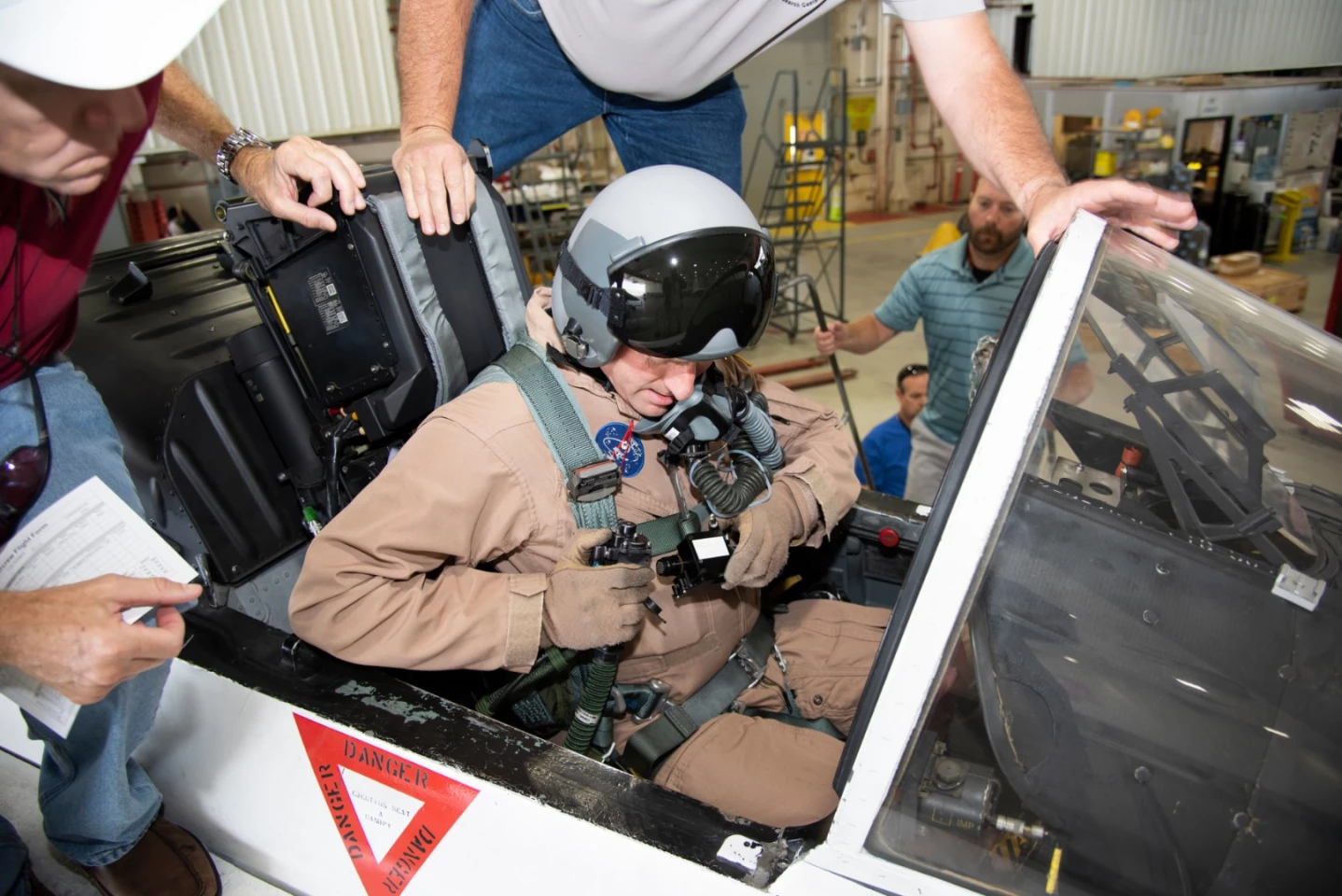US fighter pilots are having trouble breathing and NASA's Armstrong Flight Research Center has been asked to look into the problem. Over the next few months, test pilots at the Langley Research Center in Virginia will spend 160 flight hours carrying out a series of exercises in an F-18A/B and F-15D aircraft to help find out why aircrews have been affected in recent years by hypoxia, or a lack of oxygen, and determine ways to address it.
For the past five years, the US Air Force and US Navy has been plagued by jet pilots suffering from breathing problems. These physiological events (PEs) resemble hypoxia, with symptoms reported including cognitive impairment, numbness, tingling, lightheadedness, behavioral changes, and fatigue. While such events have been reported since the early 1990s, the number has become great enough that it has led to the temporary grounding of fleets of A-10 Thunderbolts, F-35A Lightning IIs, and T-6A trainers.
Until recently, the Pentagon has focused its investigation on the mechanical causes of these events. Modern jet warplanes use highly sophisticated breathing systems that are generations beyond the pressurized 95-percent oxygen bottles used by civilian pilots. Instead, they use either a Liquid Oxygen System (LOX), which allows much more oxygen to be carried, or the newer Onboard Oxygen System (OBOGS), where air from the engines is bled off, filtered, and fed over alternating beds of zeolite crystals. This absorbs the nitrogen in the air and leaves behind almost pure oxygen, which is fed to the pilot.

Despite extensive testing and corrections, the problem has persisted, so, since March 2017, the NASA Engineering and Safety Center (NESC) has conducted an independent assessment of the Navy's previous research. After looking at a wide range of factors, the team concluded that one key element required further study – the pilot.
"We found that there has been very little investigation surrounding the human in the cockpit," says NESC principal engineer Clinton Cragg. "We don't have the amount of oxygen in his mask, the amount of CO₂ in his mask, the pressure you'd want to know about in the cockpit, nor the pilot's breathing rates. Those types of things are what could help us do a full physiological assessment of what's happening to the pilot."
Working on the premise that hypoxia events happen to pilots, not aircraft, NASA is putting its test pilots through a series of simulated in-flight activities, from the very simple to the highly complex, while monitoring how flight conditions affect breathing during high-performance aircraft flights.

According to NASA, the tests will use the older LOX breathing system, which will provide a baseline for comparison with the newer OBOGS. The hope is that the research will not only help avoid a potentially fatal mishap, but also improve pilot performance.
"As a retired Air Force fighter pilot, I understand the military mission and the environment in which our pilots need to operate," says NASA pilot Jim Less. "It is my hope that the data we gather will increase our understanding of the physiology of flying high-performance fighters and will allow the military to resolve the problems they've been having with physiological events. Our military pilots need to have complete confidence in their equipment so they can focus on carrying out their vital missions."
Source: NASA







